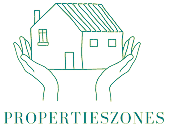In recent years, red light therapy has emerged as a popular and promising wellness treatment, offering a range of potential benefits for both physical and mental health. Also known as low-level laser therapy (LLLT) or photobiomodulation (PBM), red light therapy utilizes specific wavelengths of light to stimulate cellular activity and promote healing within the body. In this article, we delve into the science behind red light therapy, its potential benefits, and how it is being used to enhance overall well-being.
Understanding Red Light Therapy: Red light therapy involves exposure to low levels of red or near-infrared light, typically emitted by LED (Light-Emitting Diode) devices. These wavelengths penetrate the skin and are absorbed by cells, particularly mitochondria, the energy-producing organelles within cells. This absorption triggers a cascade of biological responses, including increased production of adenosine triphosphate (ATP), which fuels cellular processes and supports tissue repair and regeneration.
Potential Benefits of Red Light Therapy:
- Pain Relief: Red light therapy has been shown to alleviate pain and inflammation associated with various conditions, such as arthritis, fibromyalgia, and muscle soreness. It can help reduce pain sensitivity, improve circulation, and accelerate the healing process in injured tissues.
- Skin Rejuvenation: Red light therapy for face is widely used in dermatology for its ability to promote collagen production, reduce wrinkles and fine lines, and improve overall skin tone and texture. It can also help reduce acne inflammation, speed up wound healing, and minimize the appearance of scars and stretch marks.
- Mood Enhancement: Exposure to red light therapy may have mood-enhancing effects, with some studies suggesting it can help alleviate symptoms of depression and anxiety. The light stimulates the production of serotonin, a neurotransmitter associated with mood regulation, promoting feelings of well-being and relaxation.
- Improved Sleep: Red light therapy may help regulate the body’s circadian rhythm and improve sleep quality. By stimulating the production of melatonin, the hormone that regulates sleep-wake cycles, red light therapy can promote deeper, more restful sleep and alleviate symptoms of insomnia.
- Enhanced Athletic Performance: Athletes and fitness enthusiasts are increasingly turning to red light therapy to support recovery, reduce muscle fatigue, and enhance performance. By increasing ATP production and promoting cellular repair, red light therapy can help accelerate muscle recovery after exercise and minimize the risk of injury.
Incorporating Red Light Therapy into Your Wellness Routine: Red light therapy can be administered in various forms, including standalone devices, panels, and specialized treatments offered in wellness centers and medical clinics. Treatment protocols may vary depending on the specific condition being targeted and the desired outcome. It’s important to consult with a healthcare professional before starting red light therapy, especially if you have underlying health concerns or are pregnant.
Conclusion: Red light therapy offers a non-invasive, drug-free approach to improving overall health and well-being. By harnessing the power of specific wavelengths of light, this innovative therapy promotes cellular function, accelerates healing, and enhances various aspects of physical and mental wellness. Whether you’re seeking relief from pain, rejuvenating your skin, or optimizing athletic performance, red light therapy holds promise as a versatile and effective tool for enhancing quality of life and promoting holistic wellness.

